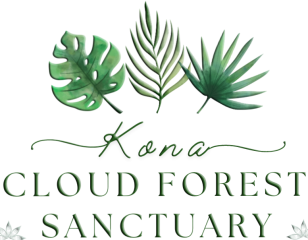From Mauka to Makai: The Interconnected Family Dynamics of Ahupua’a
At the heart of Hawaiian culture lies the concept of Ahupua’a, a traditional land division system that embodies the interconnectedness of communities from mountain to sea. Derived from ancient Hawaiian practices, Ahupua’a reflects a sustainable way of life where families harmoniously coexist with nature, ensuring mutual prosperity and stewardship of resources.
Historical Perspective of Ahupua’a
Ahupua’a originated as a method of resource management, designed to sustain communities across varying ecological zones. Each Ahupua’a typically stretched from the uplands (Mauka) down to the coastal areas (Makai), encompassing diverse ecosystems and ensuring access to essential resources like water, land for agriculture, and marine life.
Over centuries, the management of Ahupua’a evolved, influenced by social, political, and economic changes. Initially overseen by ali’i (chiefs) and konohiki (land managers), the system adapted to accommodate Western influences during colonization, impacting traditional practices and land tenure.
Geographical Layout and Features
The geographical layout of an Ahupua’a is integral to its functionality. Mauka refers to the mountainous regions, where rainfall collects into streams and feeds the land below. Makai encompasses the coastal areas, where communities engage in fishing and maritime activities, ensuring a holistic utilization of resources from mountain to sea.
Ahupua’a boundaries were demarcated by natural features such as ridgelines, rivers, or prominent landmarks, reflecting a deep understanding of ecological balance and sustainability.
Social Structure within Ahupua’a
Within each Ahupua’a, familial relationships and community roles were pivotal. Families residing in different sections of the Ahupua’a contributed to its overall sustainability through specialized activities. Elders passed down traditional knowledge from previous generations, ensuring continuity in agricultural practices, fishing techniques, and cultural ceremonies that strengthened the community bonds.
Leadership roles within Ahupua’a were often shared, with the konohiki, overseeing land use and resource allocation, while ali’i provided guidance on spiritual matters and governance.
Interconnected Economics
The economic activities within Ahupua’a were diverse and interconnected. Agriculture flourished in the fertile uplands, where families cultivated taro, sweet potatoes, and other staple crops while fishing provided a vital food source and facilitated trade between coastal communities and inland settlements.
Resource management within Ahupua’a was governed by kapu (taboos) and ahupua’a-specific regulations, ensuring sustainable practices which preserved the natural ecosystems for future generations.
Cultural Practices and Traditions
The cultural practices within Ahupua’a reinforced its spiritual and social significance. Ceremonies honoring deities associated with land and sea underscored the interconnectedness of natural and supernatural realms. Stories passed down through generations conveyed moral teachings and preserved historical knowledge, reinforcing the community’s identity and resilience.
Environmental Impact and Conservation Efforts
Modern challenges such as urbanization, climate change, and invasive species pose threats to Ahupua’a sustainability. Conservation efforts aim to integrate traditional knowledge with contemporary practices, promoting watershed management, reforestation, and marine conservation initiatives.
Community-led conservation projects foster collaboration between stakeholders, ensuring Ahupua’a resilience against environmental pressures while honoring ancestral wisdom.
Tourism and Education
The ahupua’a serve as living classrooms for cultural education and eco-tourism. Visitors can engage in hands-on experiences, learning about traditional practices such as lo’i kalo (taro fields) cultivation and traditional fishing methods. These tourism initiatives help contribute to the local economies while raising awareness about Ahupua’a conservation and cultural preservation efforts.
Community involvement in tourism initiatives ensures that economic benefits align with cultural integrity, promoting responsible tourism practices that respect Ahupua’a traditions and Hawaii’s natural resources.
Cultural Challenges and Resilience
The resilience of Ahupua’a depends on adaptive management strategies that balance traditional practices with modern challenges. Local community-driven initiatives empower residents to safeguard their cultural heritage while also addressing contemporary issues through innovation and collaboration.
Preserving Ahupua’a requires ongoing commitment to sustainable development, adaptive governance, and intergenerational knowledge sharing. By embracing resilience strategies, Ahupua’a communities uphold their legacy as stewards of land and sea, ensuring a sustainable future for generations to come.
Conclusion
From Mauka to Makai, the interconnected family dynamics of Ahupua’a epitomize a harmonious relationship between people and their environment. Rooted in ancestral wisdom and cultural resilience, Ahupua’a continue to thrive as living legacies of Hawaiian heritage, offering valuable lessons in sustainability, community resilience, and holistic resource management.
FAQs
What is an Ahupua’a? An Ahupua’a is a traditional Hawaiian land division system that extends from mountainous regions (Mauka) to coastal areas (Makai), encompassing diverse ecosystems.
How did Ahupua’a contribute to Hawaiian sustainability? Ahupua’a facilitated sustainable resource management through integrated agriculture, fishing, and communal stewardship practices.
What are some challenges faced by modern Ahupua’a? Modern challenges include urbanization, climate change, and invasive species, impacting traditional resource management practices.
Why are cultural practices important within Ahupua’a? Cultural practices reinforce community identity, transmit historical knowledge, and promote sustainable stewardship of natural resources.
How can tourists support Ahupua’a conservation efforts? Tourists can support conservation by engaging in responsible tourism practices, respecting cultural protocols, and learning about Ahupua’a traditions.
